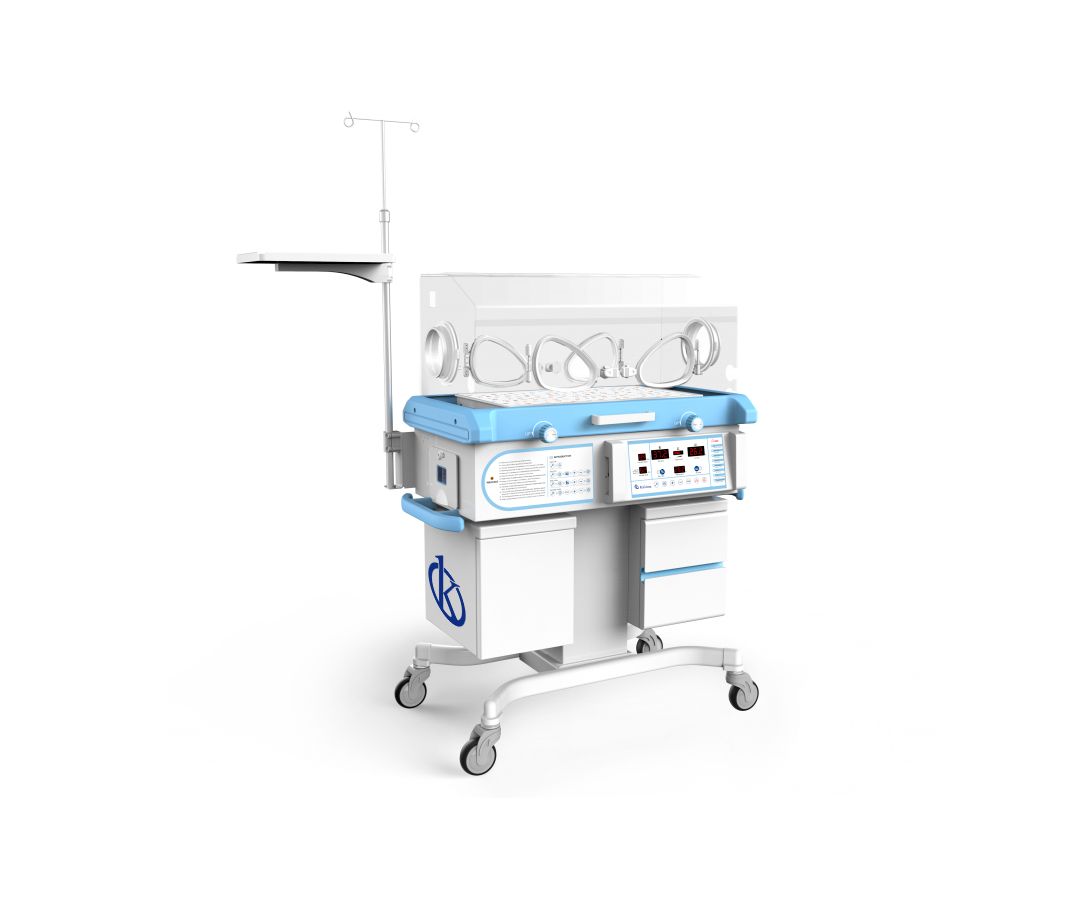Incubators for newborns (neonatal) are medical devices used to provide an environment in which essential variables are controlled to give life support to newborns, whether premature or term, who are not prepared to adapt to the environment outside (extrauterine) thus allowing its proper development.
Neonatal incubators are perfectly designed to handle the newborn without removing him from the incubator, which allows carrying out actions that involve: isolation, oxygen supply, monitoring of vital functions (cardiac, brain and breathing activity).
How is a neonatal incubator composed?
A neonatal incubator is made up of a dome and the chassis. The power source and the sensors that alert in case of failure are located in the chassis, for the protection of the newborn.
The cover or dome is what allows the baby to be isolated and forms a barrier between the external environment and the microenvironment generated by the incubator; which protects the newborn from situations such as drafts, low temperatures, among others. This cover is designed in such a way that it allows the visibility of the baby and is generally made of a material that does not react with oxygen, thus avoiding corrosion in cases of oxygen therapy.
The incubators have two front doors, two side doors and two rear doors, each one covered by a special plastic to reduce heat loss; In addition, they have a large door on the front, through which the baby can be introduced. The chassis is the metal base of the incubator. In it are the different sensors and the power source, and on it the mattress holder is located.
Some neonatal incubators carry phototherapy lamps as an accessory, essential for the treatment of neonatal jaundice. These lamps form what is known as a phototherapy unit, generally consisting of 4 blue light tubes and 2 white light tubes. The blue ones are placed in the center and the white ones on the sides. These phototherapy lamps are fluorescent and LED bulbs.
What is phototherapy?
Phototherapy is a therapeutic measure in which electromagnetic radiation (light) emitted by special lamps is used in the treatment of neonatal jaundice, in order to reduce the effects of neonatal hyperbilirubinemia. Phototherapy markedly decreases bilirubin levels in the capillaries and in the interstitial space, transforming bilirubin into water-soluble isomers that can be eliminated without conjugation in the liver. The administration of phototherapy will depend on bilirubin levels, age of life, gestational age at birth, and clinical status of the newborn.
Phototherapy Side Effects
The side effects of phototherapy are similar to those produced by the sun. Occasionally reddening of the skin with itching may appear. An increase in pigmentation and skin dryness may appear, which requires the use of moisturizing creams. That is why the use of phototherapy in neonatal incubators must be carried out by highly qualified personnel and under continuous medical supervision.
At Kalstein we are MANUFACTURERS of medical equipment of the highest quality and we offer you innovative neonatal incubators at the best PRICES on the market. That’s why we invite you to take a look at the Products menu. HERE


